| REF: | 15524_313349 |
| DATE: | 14 - 18 Apr 2025 18.Apr.2025 |
| LOCATION: |
Barcelona (Spain) |
| INDIVIDUAL FEE: |
5500 Euro |
Introduction:
Disaster risk management (DRM) is the systematic process of using administrative directives, organizations, skills, and capacities to implement strategies, policies, and improved coping capacities to lessen the adverse impacts of hazards and the possibility of disaster.
Proficiency in GIS and remote sensing is increasingly essential in DRM due to their roles in analyzing and visualizing spatial data related to hazardous events. GIS's importance in disaster management lies in its ability to gather, store, analyze, and visually communicate geographic information.
This information informs decision-making to mitigate risks and manage post-disaster scenarios. Remote sensing for disaster management involves using satellite or aerial imagery to collect data about the Earth's surface, providing critical insights into areas affected by natural or human-made disasters.
Enhance your skills in the crucial field of disaster risk management by deeply understanding the application of Geographic Information Systems (GIS) and Remote Sensing (RS). Harness spatial data to lead disaster risk assessment and management with a robust foundation in GIS and remote sensing technologies.
Targeted Groups:
This GIS and remote sensing in disaster risk management training is designed for professionals involved in development and disaster risk management, including:
- Professionals working in development areas, mostly in DRM-related fields.
- Managers of institutions and companies.
- Managers of crisis and risk management departments.
- Workers in the field of disaster and crisis management.
- Public relations and media workers because of their role in managing any crisis.
- Workers in the field of maintaining the security of institutions.
- Relief work crews.
- Those wishing to develop their capabilities in this field.
Training Objectives:
By the end of this GIS and remote sensing in disaster risk management course, participants will be able to:
- Describe and utilize spatial data, GIS, and remote sensing in disaster risk assessment and management.
- Utilize existing sources of historical disaster information and elements at risk data.
- Apply GIS/remote sensing in hazard, vulnerability, and risk assessment.
- Employ risk information in emergency preparedness planning.
- Visualize hazard and risk information.
- Apply GIS/remote sensing to post-disaster damage assessment.
Targeted Competencies:
Participants' competencies in this GIS and remote sensing in the disaster risk management training will:
- Maintenance Planning (Planners, Schedulers, Engineers, Leaders, and Managers).
- Maintenance (Engineers, Supervisors, Section Leaders, Team Leaders, and managers).
- Reliability (Engineers, Section Leaders, Team Leaders, and Managers).
- Integrity (Engineers, Section Leaders, Team Leaders, and Managers).
- Operation (Engineers, Section Leaders, Team Leaders, and Managers).
Course Content:
Unit 1: Introduction to GIS and RS in Disaster Risk Management:
- Basic GIS and RS concepts and terminologies in the context of disaster management.
- International and Regional Guidance in Protocols and Action Plans
- Introduction to spatial information.
- Handling spatial information Using Quantum GIS Software.
- Application of GIS and Remote Sensing in Disaster Risk Management:
- Data sources for DRM.
- Satellite image data sources for DRM.
- GPS /mobile phone GPS for HV field GIS data collection using ODK.
- GPS/mobile Course Tour.
- GPS, GIS Integration using QGIS.
- How can GIS and RS be used to identify geographic areas affected by each natural hazard?
Unit 2: Hazard, Vulnerability, and Risk Assessment:
- Types and methods of risk assessment, risk evaluation, and cost-benefit analysis.
- Gentle Refresher of Microsoft Excel.
- Spatial data preparation and GIS integration techniques in Microsoft Excel.
- Use of GIS in disaster preparedness planning.
- Elements at risk, hazard, and vulnerability assessment using GIS.
- GIS Multi criteria analysis in vulnerability assessment.
- How can GIS and RS map existing buildings, infrastructure, land use, and critical facilities in potential hazard areas?
Unit 3: Risk Information for Risk Reduction Planning:
- Visualization of risk information (Using QGIS/ILWIS/SAGA Software).
- Risk mapping and database generation using Excel/QGIS and SAGA
- Disaster monitoring: satellite image processing techniques for change detection
- Creating a personal geodatabase for GIS emergency support manpower with personnel location information, contact information, and specialized skills.
- Creating a risk map.
- Use GIS and RS to identify the extent and magnitude of each hazard.
Unit 4: Early Warning Systems and Information Networks:
- Early warning systems and Information Networks for major hazards.
- How can GIS and RS be used in a Drought Early Warning System?
- Disaster Impact Analysis.
- The use of satellite imagery for disaster relief and recovery:
- Satellite data receiving and processing stations depend on the location of training and time availability.
- How can satellite images and aerial photos be used to locate refugees and internally displaced persons?
Unit 5: Public Participatory GIS and Disaster Risk Management:
- Participatory GIS as a tool for DRM mapping.
- Using Google Maps and Google Earth in DRM.
- SMS to Map for community crisis mapping.
- What GIS and RS tools are suitable for mapping urban (social) hazards such as crime zones, drug corners, and accident black spots?


